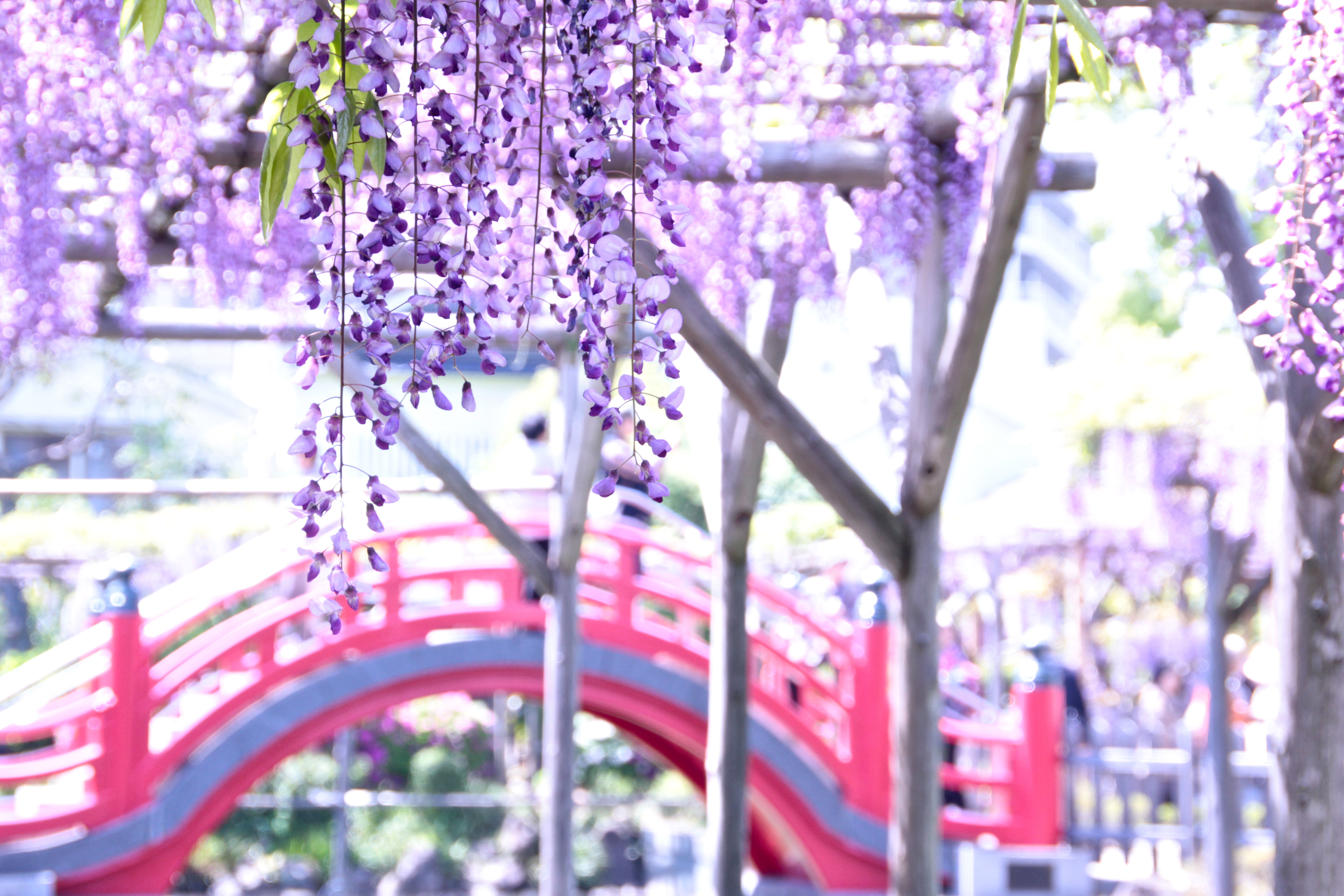Each year, I tell myself I have to make time to enjoy the famed trellises of wisteria blossoms at Kameido Tenjin in Tokyo's eastern Koto Ward. Then, I blow it. This year, I enlist my mother-in-law, who's savvy about such things, to get the timing just right. "It'll be really crowded," she warns.
Sure enough, after I alight from a JR Sobu Line train at Kameido Station on a dazzling weekday, all I have to do is follow a parade of parasols heading north on Meiji Dori. Kameido, once a turtle-shaped island, was subsumed in sandy landfill during the early 1600s. However, people who moved to live on the new land found they could only draw fresh water from a well dug over the original island — so they named the area by combining the words for turtle (kame) and water well (ido).
Turning left on Kuramaebashi Avenue, I join the hordes at Kameido Tenjin. Built in 1646 to honor the Heian Period scholar, poet and politician Sugawara no Michizane, who was posthumously deified as a god of learning, the Shinto shrine today is a study in crowd management.



















With your current subscription plan you can comment on stories. However, before writing your first comment, please create a display name in the Profile section of your subscriber account page.